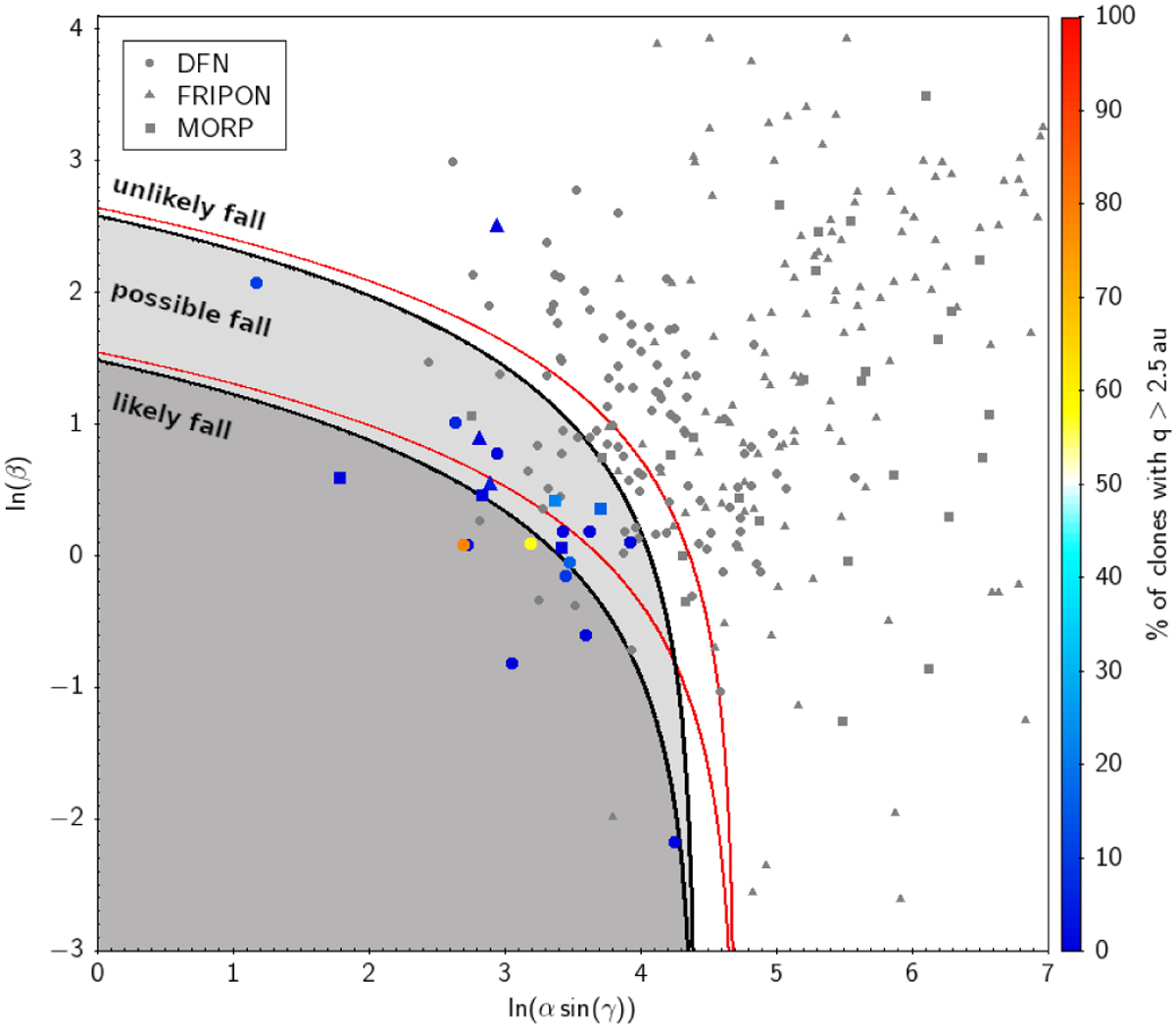Fig. 16

Download original image
Distribution of αᵕβ values for JFC-like fireballs from the DFN, MORP, and FRIPON observation networks. Here, γ is the trajectory slope relative to the horizontal. If a macroscopic event is considered to have a final mass of ≥50 g, assuming ρm = [2240,3500] kg m−3 (carbonaceous and ordinary chondrite, respectively) and cdΛ = 1.5, meteorite-dropping events can easily be identified given the range of possible shape change coefficients (µ). The black lines correspond to the ordinary chondrite density, whereas the red lines denote a carbonaceous meteorite density, described by Eqs. (3)–(6). The coloration is indicative of the percentage of particle clones within the 10 kyr simulations that reached perihelion values >2.5au, and only fireballs that also fulfilled the meteorite-dropping criteria of Vfinal < 10 km s−1 and Hfinal < 35 km are considered likely meteorite droppers (after Brown et al. 2013).
Current usage metrics show cumulative count of Article Views (full-text article views including HTML views, PDF and ePub downloads, according to the available data) and Abstracts Views on Vision4Press platform.
Data correspond to usage on the plateform after 2015. The current usage metrics is available 48-96 hours after online publication and is updated daily on week days.
Initial download of the metrics may take a while.


